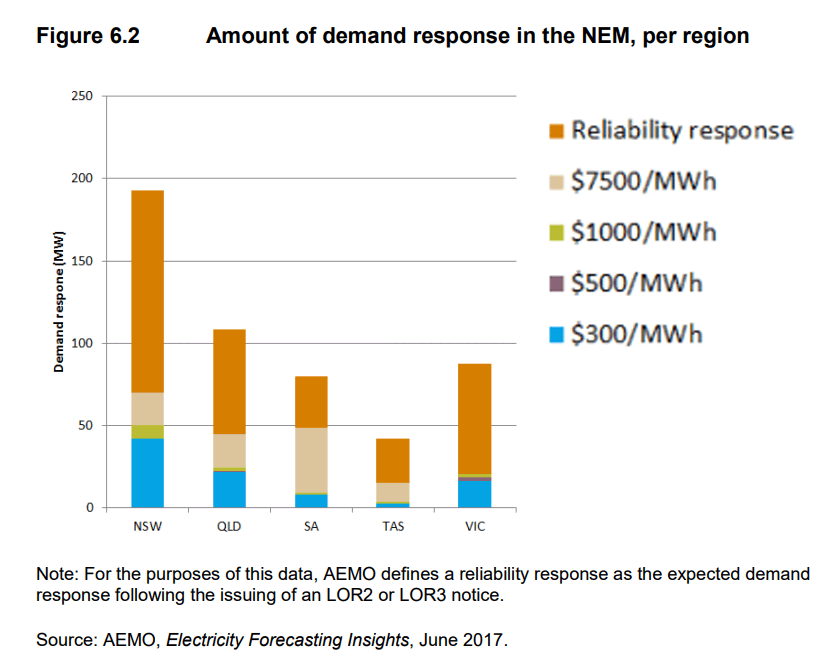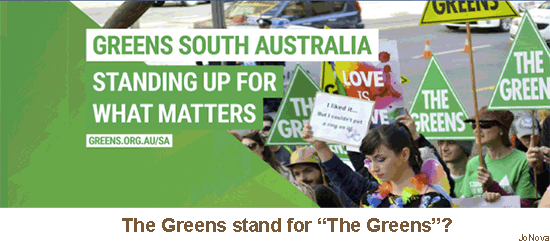- Joined
- Jan 28, 2013
- Messages
- 94,823
- Reaction score
- 28,342
- Location
- Williamsburg, Virginia
- Gender
- Male
- Political Leaning
- Independent
[h=2]Bonfire Electricity Bills! Two day heat wave burns nearly $400m: $45 per head in Vic, $80 each in SA.[/h]
While geniuses are bragging that the Australian grid survived two normal hot summer days without falling over, they don’t mention the flaming spectacle of the cost.
Tom Quirk and Paul Miskelly, after a couple of suggestions from me, have calculated the full staggering electricity bill at $119m for SA and $267m for Victoria, making it nearly a $400 million dollar bonfire — for two days that were neither the hottest ever, or records for peak electricity use. See their work and details below.
To put this in perspective, a whole new gas plant could have been built for around $230 million. Instead of vaporising this money, Australians could have constructed one whole new gas generation plant, paid it off, and had money left over to give away free electricity.
Every household of four in Victoria just lost something like $170 of productivity for two days of electricity, and in South Australia, $280. Respectively, $45 per Victorian and $80 per South Australian. While businesses also share this burden, ultimately companies are made of people, and this is productivity lost to both states. The losers are shareholders, customers, and employees. Some will be interstate, but the pain flows back. The price is also paid in higher cost items, lower investment, and fewer jobs. Coles and Woolies still have to cover the cost of keeping the fridges running. The money will be squeezed out of citizens one way or the other.
And this is not the total bill, it’s the excess electricity bill above and beyond the normal but inflated January prices of the last few weeks. Even normal prices now are twice what they were in 2015. Back then, the average price in Victoria and SA was $35 per megawatt hour and the average peak price was $49/MWh. Now the average and peak costs on a January day are $82MW/h, and $87/MWh respectively.
But wait, it’s worse than that. Even above this excess electricity price, there is the price of buying the diesels (a secret ’til the $400m bill was revealed), plus the cost of all the businesses which bought their own diesel generators (aren’t we a first world country any more?), plus the cost of all the “Demand Response” — the mini blackouts required to stop the system breaking (more on that tomorrow).
Then, then, there is the awful cost of all the businesses that were affected — the stress, the lost production, the investments that won’t happen, and the bizarre spectacle of Australia not having enough electricity to keep the lights on at our hospitals. We are leading the way to the third world! . . .
While geniuses are bragging that the Australian grid survived two normal hot summer days without falling over, they don’t mention the flaming spectacle of the cost.
Tom Quirk and Paul Miskelly, after a couple of suggestions from me, have calculated the full staggering electricity bill at $119m for SA and $267m for Victoria, making it nearly a $400 million dollar bonfire — for two days that were neither the hottest ever, or records for peak electricity use. See their work and details below.
To put this in perspective, a whole new gas plant could have been built for around $230 million. Instead of vaporising this money, Australians could have constructed one whole new gas generation plant, paid it off, and had money left over to give away free electricity.
Every household of four in Victoria just lost something like $170 of productivity for two days of electricity, and in South Australia, $280. Respectively, $45 per Victorian and $80 per South Australian. While businesses also share this burden, ultimately companies are made of people, and this is productivity lost to both states. The losers are shareholders, customers, and employees. Some will be interstate, but the pain flows back. The price is also paid in higher cost items, lower investment, and fewer jobs. Coles and Woolies still have to cover the cost of keeping the fridges running. The money will be squeezed out of citizens one way or the other.
And this is not the total bill, it’s the excess electricity bill above and beyond the normal but inflated January prices of the last few weeks. Even normal prices now are twice what they were in 2015. Back then, the average price in Victoria and SA was $35 per megawatt hour and the average peak price was $49/MWh. Now the average and peak costs on a January day are $82MW/h, and $87/MWh respectively.
But wait, it’s worse than that. Even above this excess electricity price, there is the price of buying the diesels (a secret ’til the $400m bill was revealed), plus the cost of all the businesses which bought their own diesel generators (aren’t we a first world country any more?), plus the cost of all the “Demand Response” — the mini blackouts required to stop the system breaking (more on that tomorrow).
Then, then, there is the awful cost of all the businesses that were affected — the stress, the lost production, the investments that won’t happen, and the bizarre spectacle of Australia not having enough electricity to keep the lights on at our hospitals. We are leading the way to the third world! . . .







